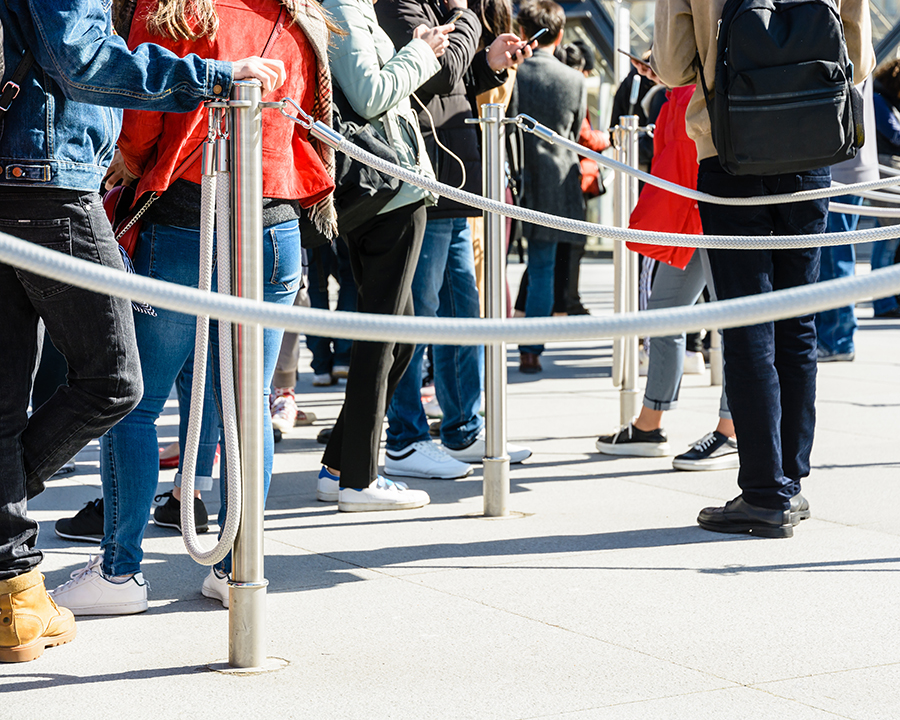Using Video Content Analytics to Gather Business Intelligence for Mass Events

Large-scale events warrant large-scale security systems. Whether an event takes place at a facility on a sprawling campus, in a convention center, at a theme park, or in a stadium, video surveillance systems are a standard security and monitoring tool leveraged by venues of all sizes, typically exclusively for the sake of physical security: The video cameras are regarded as a force multiplier for security and law enforcement personnel, extending their oversight. However, the value of video surveillance reaches far beyond increased safety and security, especially when systems are paired with video intelligence software. In a previous blog post, I discussed the value of video content analytics (VCA) for optimizing security at large event facilities. In this post, I’d like to explain how video analysis solutions can maximize event management beyond security, helping large event facilities drive operational efficiency based on insights derived from video.
VCA enables users to gain a full understanding of a scene by detecting and analyzing all the objects that appear and identifying and classifying them, so that users can investigate object interactions, dwelling and navigation paths. Because video object metadata aggregates over time, the information can be leveraged by event organizers and venues to uncover valuable insights based on historic and current data. By visualizing the data into dashboards and heatmaps, the organizations can easily consume and understand operational trends and patterns about object interactions, demographics, hotspots, and vehicle or pedestrian movement patterns. Management teams are thus empowered with actionable business intelligence to streamline daily activity and share critical information across business units: From security to operations, retail, marketing, and project management, all departments responsible for the execution of a mass event can leverage video intelligence to resolve critical operational challenges and improve daily management of the venue.
Security
Video analytics can provide heatmaps that measure, among other metrics, the most popular pathways within a building, the most common entry and exit points, and areas where drivers and pedestrians tend to congregate or cause crowding. Conversely, the heatmaps can also indicate which spaces are underutilized. Security teams can benefit from such dashboard intelligence because it helps them understand activity trends, identify problem hotspots, and plan for the expected and unexpected. A security team can then make intelligent decisions, for instance, whether to increase or decrease security staffing in certain locations or which traffic flow and signage changes will be most effective in preventing bottlenecks.
Operations and Maintenance
Large event venues vary in size, but stadiums and convention centers can have as many as 30-40 entrances. With data visualization reports generated by video content analytics, operations and security staff can see which entrances and exits are most often used, and detect trends in entry and exit point activity. They may discover that some entrances and exits aren’t fully utilized, which may create crowding in other areas; or they may discover that some spaces are simply underutilized. By analyzing visitor traffic trends over time, venues can preemptively prepare for expected traffic peaks, and plan how to manage these – for instance, by hiring more staff or redirecting staff to the highest traffic areas. This promotes safety by enabling optimal staff placement, and it ensures a happier, safer customer/visitor experience.
Using building paths data, maintenance managers can also facilitate efficient and timely maintenance. With the ability to identify when a pre-defined number of people have entered an area – for instance a restroom entrance –building maintenance managers can proactively prioritize the cleaning of high-traffic areas.
Retail
Equipped with heatmap and path data, retail managers can see which stores, aisles and kiosks their customers typically visit, where they dwell the longest, which paths they take, and which displays are most popular. This helps retail managers understand customer volume, preferences and trends, so they can best respond to their customer needs and wants, whether by changing store layout, deploying the appropriate number of staffers, extending successful marketing campaigns or restocking the most popular goods.
Marketing
Marketing teams can use dashboard reports to get concrete data about visitor demographics; facility navigation and dwell patterns; most popular concession stands or information kiosks; and more. By leveraging video content analysis to drill down into visitor demographics, events venues can further understand and cater to their audiences. This can guide venues to make intelligent decisions about advertisements, offerings, events and performances that will appeal to their primary audiences and help them identify strategies to attract other visitor demographics more effectively.
Property Management
Property managers need data to effectively plan venue expansion and construction projects. By illustrating the patterns of vehicular and human navigation, for example, video content intelligence can inform the planning of future infrastructure, such as buildings, parking lots and roads. Large event facilities invest millions, or sometimes billions of dollars in construction; it pays to have quantifiable insights to inform those construction decisions, rather than to rely solely on the opinions of consultants and planners.
Video intelligence software data visualizations can also provide quantifiable traffic data to inform strategic building locations or event leasing pricing for prospective retail or restaurant renters. This helps property managers effectively attribute value to different properties when pricing rental properties.
Each department in an event venue benefits substantially by having long-term data and business intelligence provided by maximizing their video networks with analytics. Whether in terms of increased revenue, improved public safety, increased visitor satisfaction, better planning, or streamlined daily operations, the combined benefits to a large event venue are exponential in value.
More on video analytics for hospitality and entertainment here.
Signup to receive a monthly blog digest.